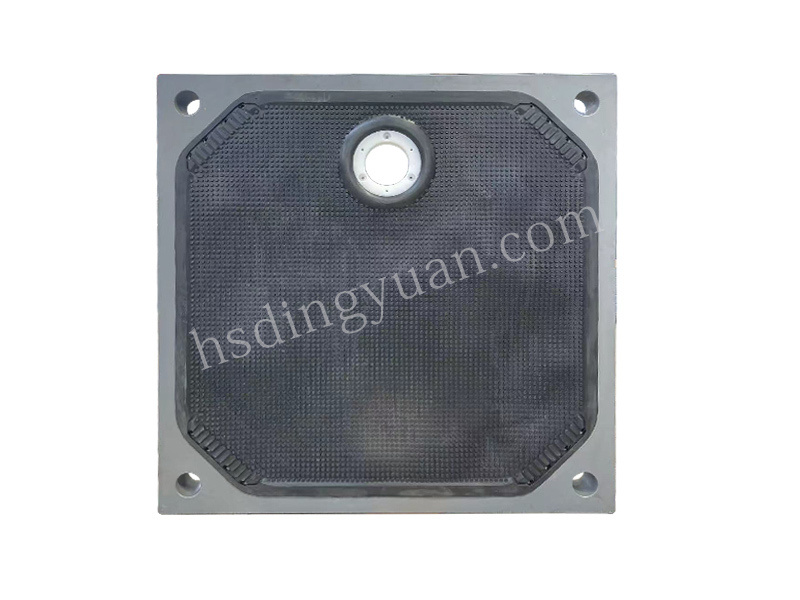Boost Filter Efficiency with State-of-the-Art Composite Rubber Diaphragm Plate
May 13,2025

Boost Filter Efficiency with State-of-the-Art Composite Rubber Diaphragm Plate
Introduction to Composite Rubber Diaphragm Plates
In the ever-evolving landscape of industrial filtration, **composite rubber diaphragm plates** have emerged as a game-changer, significantly enhancing the efficiency of filters across various applications. This article delves into the intricate world of diaphragm plates, focusing on how their unique properties contribute to improved filtration performance.
The Role of Filtration in Industrial Processes
Filtration plays a critical role in ensuring product quality and operational efficiency in industrial processes. Contaminants can compromise the integrity of machinery, leading to increased maintenance costs and downtime. **Composite rubber diaphragm plates** are designed to address these challenges, offering enhanced durability and filtration capabilities.
Understanding Filter Efficiency
Filter efficiency is a measure of a filter's ability to remove particles from a fluid. It is affected by various factors, including the filter material, design, and maintenance practices. High filter efficiency translates to better product quality, reduced waste, and lower operational costs.
What Makes Composite Rubber Diaphragm Plates Unique?
Composite rubber diaphragm plates are engineered from advanced materials that provide superior strength and flexibility. Their unique composition allows for higher performance under extreme conditions, making them ideal for diverse industrial applications.
Key Benefits of Composite Rubber Diaphragm Plates
1. **Enhanced Durability**: Composite materials resist wear and tear, extending the lifespan of diaphragm plates.
2. **Superior Flexibility**: These plates can withstand high pressures and dynamic movements, maintaining their shape and performance.
3. **Chemical Resistance**: Composite rubber materials offer excellent resistance to various chemicals, making them suitable for aggressive environments.
4. **Improved Filtration**: The innovative design of these plates enhances the overall filtration process, capturing finer particles and improving product quality.
5. **Cost-Effectiveness**: By reducing downtime and maintenance costs, composite rubber diaphragm plates provide long-term savings.
Applications of Composite Rubber Diaphragm Plates
Composite rubber diaphragm plates are versatile and can be utilized in a wide range of industrial applications, including:
1. Water Treatment Facilities
In water treatment, maintaining filter efficiency is paramount. Composite rubber diaphragm plates enhance the filtration process, ensuring clean and safe water is delivered.
2. Chemical Processing Plants
The chemical industry requires materials that can withstand corrosive substances. Composite rubber diaphragm plates provide the necessary durability and chemical resistance for effective filtration.
3. Food and Beverage Industry
In this industry, hygiene and safety are critical. Using composite rubber diaphragm plates ensures that filtration systems maintain high standards of cleanliness and performance.
4. Pharmaceutical Manufacturing
Pharmaceutical applications demand stringent adherence to quality standards. Composite rubber diaphragm plates help achieve the required filter efficiency and reliability.
Installation and Maintenance of Composite Rubber Diaphragm Plates
To maximize the benefits of composite rubber diaphragm plates, proper installation and maintenance are essential.
Installation Guidelines
- **Inspect the System**: Before installation, thoroughly inspect the filtration system for any signs of wear or damage.
- **Follow Manufacturer Instructions**: Always adhere to the guidelines provided by the diaphragm plate manufacturer during installation.
- **Ensure Proper Sealing**: Check that the plates are correctly sealed to prevent leaks during operation.
Maintenance Best Practices
- **Regular Inspections**: Conduct routine checks on the diaphragm plates to ensure they are functioning correctly.
- **Clean Thoroughly**: Maintain cleanliness by regularly cleaning the filters and diaphragm plates.
- **Replace When Necessary**: Monitor the condition of the diaphragm plates and replace them as needed to maintain optimal efficiency.
Expert Tips for Optimizing Filter Performance
1. **Monitor Pressure Levels**: Keeping an eye on pressure levels can help identify when filters need maintenance or replacement.
2. **Utilize Automation**: Incorporating automated monitoring systems can enhance efficiency and reduce human error.
3. **Train Personnel**: Ensuring that staff are well-trained in the operation and maintenance of filtration systems can lead to better overall performance.
Future Trends in Filtration Technology
As industries continue to evolve, so does the technology used in filtration systems. Emerging trends include:
1. Smart Filtration Systems
Integrating IoT technology can provide real-time monitoring and data analysis, allowing for proactive maintenance and optimization.
2. Advanced Materials
Research into new composite materials will likely yield even more effective filtration solutions, enhancing performance and sustainability.
3. Increased Sustainability Efforts
With growing environmental concerns, the focus on sustainable filtration solutions is likely to intensify, pushing for more eco-friendly materials and processes.
Conclusion
The implementation of **state-of-the-art composite rubber diaphragm plates** represents a pivotal advancement in industrial filtration technology. By understanding their unique benefits and applications, industries can significantly improve their filter efficiency, leading to enhanced product quality and reduced operational costs. Emphasizing proper installation and maintenance further ensures that these advanced materials deliver their full potential. As filtration technology continues to evolve, staying informed about innovations will be essential for maintaining competitive advantages in the market.
FAQs
1. What is a composite rubber diaphragm plate?
A composite rubber diaphragm plate is a filtration component made from advanced materials designed to enhance the efficiency and durability of filtration systems.
2. How do composite rubber diaphragm plates improve filter efficiency?
They provide superior flexibility, chemical resistance, and durability, allowing for better particle capture and overall filtration performance.
3. In which industries are composite rubber diaphragm plates commonly used?
They are widely used in water treatment, chemical processing, food and beverage, and pharmaceutical manufacturing industries.
4. What maintenance practices are recommended for diaphragm plates?
Regular inspections, thorough cleaning, and timely replacements are essential to maintain optimal filtration performance.
5. What future trends are expected in filtration technology?
Future trends include smart filtration systems, advanced materials, and increased sustainability efforts in filtration processes.
Contact Us
E-mail :
Ying@hsdingyuan.com
Phone/WhatsApp:
+86-13031859588
Address:
No. 104, Jingzhou Shuangchuang Industrial New Area, Jing County, Hengshui City, Hebei Province







